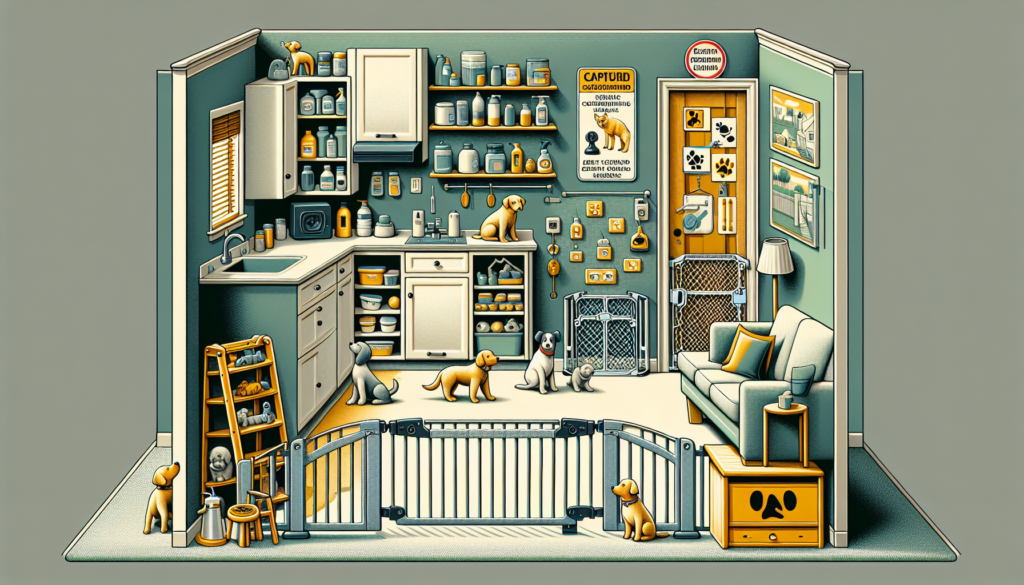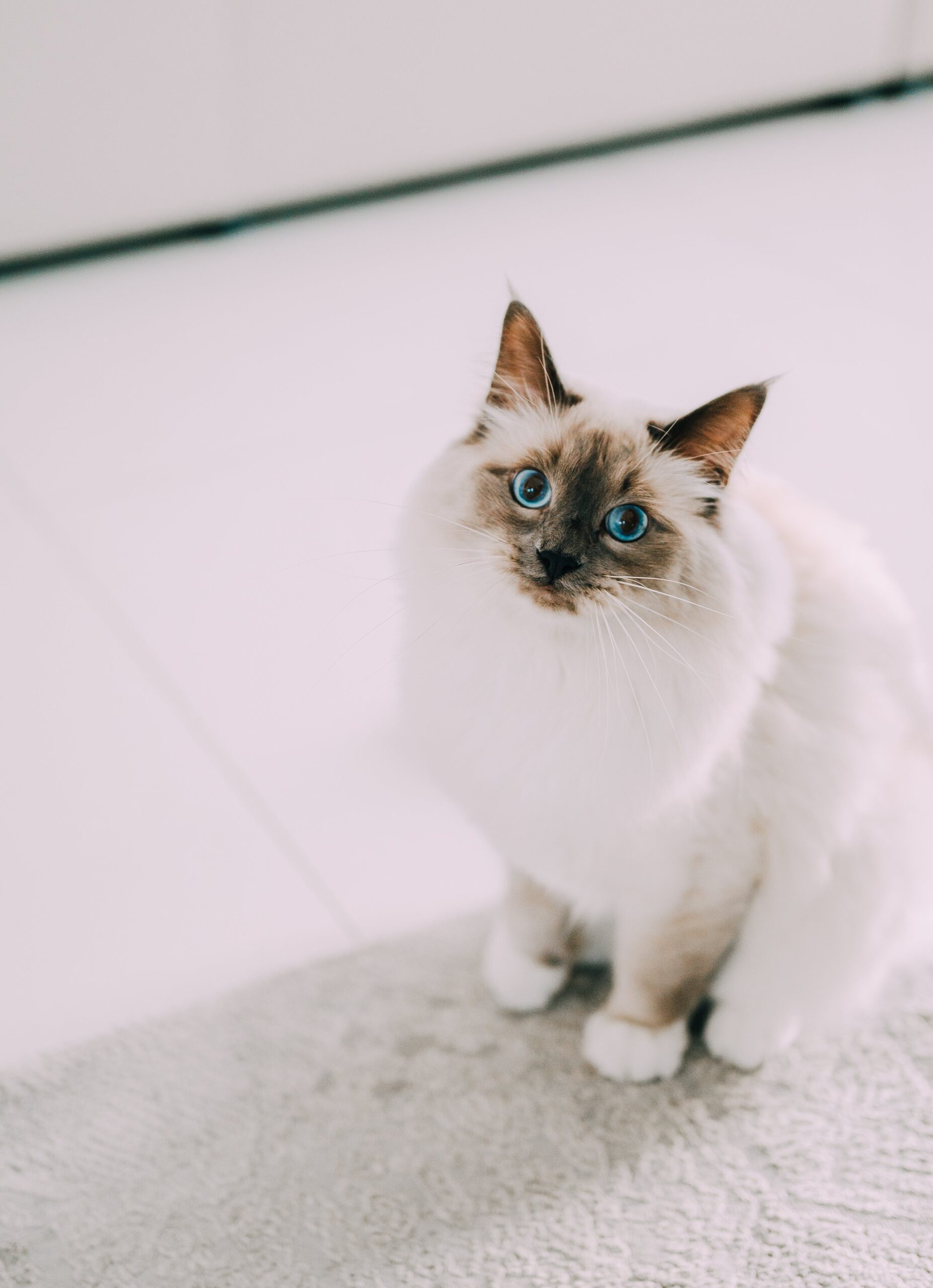
So you’ve got a furry friend joining your household, and you want to make sure your home is a safe and secure environment for them. The thought of pet-proofing might seem overwhelming, but don’t fret – we’ve got you covered! In this article, we’ll explore some practical tips and strategies to help you create a pet-friendly space without sacrificing style or comfort. Whether you’re dealing with a mischievous pup, a curious kitty, or any other four-legged friend, these tips will help keep them out of harm’s way while ensuring your home remains a sanctuary for everyone involved.
Securing Dangerous Items
When it comes to keeping your pet safe at home, one of the first steps you should take is to identify and store toxic substances properly. This includes household cleaning products, chemicals, and medications. Make sure they are stored in cabinets or drawers that are out of reach of your pets. Consider using childproof locks to provide an extra layer of security. Label these substances clearly and keep them in their original containers, as this will make it easier to identify and avoid accidental ingestion.
Another important aspect of pet-proofing is securing your trash cans. Pets can be attracted to the smells coming from the garbage and may try to dig through it. This can result in them ingesting harmful substances or getting injured by sharp objects. Opt for trash cans with secure lids or invest in pet-proof trash containers that are designed to keep curious pets out.
Furthermore, when it comes to medications, it’s crucial to keep them out of your pet’s reach. This includes not only prescription medications but also over-the-counter drugs, vitamins, and supplements. Many human medications can be toxic to pets, so it’s best to store them in a high cabinet or a locked box. Don’t forget to properly dispose of any expired or unused medications.
Additionally, it’s important to keep sharp objects, such as knives, scissors, and needles, out of your pet’s reach. These objects can cause injuries if accidentally stepped on or chewed. Make sure to store them safely in drawers or cabinets and avoid leaving them unattended on countertops or tables where your pet can easily access them.
Lastly, small objects can pose a choking hazard to pets, especially if they have a tendency to chew or swallow things. Keep small items like buttons, coins, jewelry, and children’s toys stored in containers that are secured and out of your pet’s reach. Regularly check the floor and other potential areas where your pet may have access to ensure there are no small objects that they could ingest.
Protecting Furniture and Belongings
Our furry friends can sometimes be a bit too playful and their enthusiasm can inadvertently cause damage to our furniture and belongings. To prevent this, consider covering your furniture with durable fabrics that are resistant to scratching and staining. There are special pet-friendly upholstery options available that are designed to withstand the wear and tear caused by pets.
When it comes to cleaning, it’s important to use pet-friendly cleaners to ensure the products won’t harm your pets if they come into contact with them. Many common household cleaners contain chemicals that can be toxic to animals. Look for natural, non-toxic cleaners or specifically labeled pet-friendly cleaning products to minimize the risk.
Cats, in particular, have a natural instinct to scratch, so providing them with appropriate scratching surfaces can save your furniture from being destroyed. Invest in scratching posts or boards and place them strategically near areas where your cat tends to scratch. Encourage them to use these designated surfaces by sprinkling them with catnip or using interactive toys.
To protect your floors from scratches caused by your pet’s claws, consider using furniture pads or caps on the legs of chairs, tables, and other furniture pieces. This will not only prevent scratches but also reduce the noise of furniture being moved around by your pet.
When it comes to fragile decorations, it’s important to store them safely to prevent them from being knocked over and broken. Place delicate ornaments, vases, or other breakable items out of your pet’s reach or consider displaying them in a secured cabinet or on elevated surfaces.
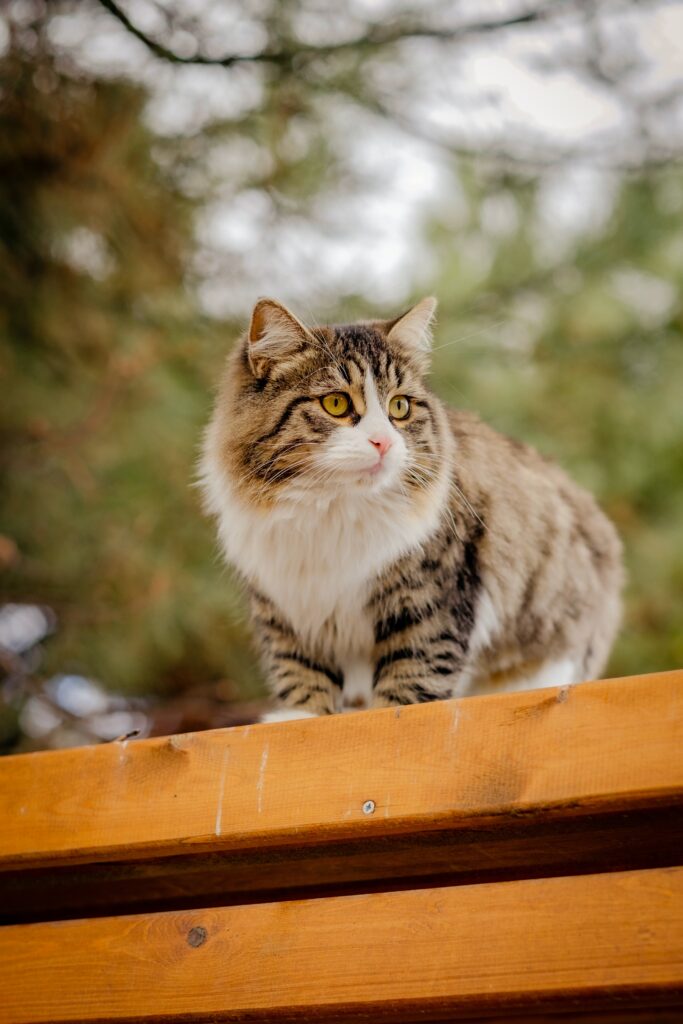
Creating Safe Zones
Creating dedicated safe zones within your home can provide your pets with a sense of security and help prevent them from accessing areas that may be dangerous or off-limits. Designate a specific area in your home as a pet-friendly zone where you can place their bed, toys, and water bowl. This can be a corner of a room or an entire room itself, depending on the size of your pet and your available space.
Pet gates or barriers can be useful in preventing your pets from accessing certain areas of your home. Use them to block off staircases or areas where you store hazardous items, such as cleaning supplies or delicate belongings. There are a variety of gates and barriers available, ranging from expandable gates to freestanding barriers, so you can choose the option that best suits your needs.
If you have a balcony or terrace, it’s important to secure these areas to ensure your pets’ safety. Install protective barriers or netting to prevent your pets from falling or jumping off the balcony. Make sure the barriers are tall enough and have narrow gaps to prevent your pet from squeezing through.
Electrical cords can be tempting targets for pets that like to chew, so it’s crucial to protect them. Use cord covers or wire organizers to keep electrical cords out of your pet’s reach. Additionally, consider taping down cords or using cord concealers to further discourage chewing.
Furthermore, providing a comfortable and secure resting space for your pets is essential. Set up cozy beds or cushions in areas that are safe and quiet, away from any potential hazards or high-traffic areas. This will give your pets their own designated space where they can relax and feel secure.
Eliminating Potential Hazards
To ensure the safety of your pets, it’s important to eliminate or minimize potential hazards in your home. Start by securing electrical outlets to prevent curious pets from sticking their paws or other objects into them. Outlet covers or plug-in protectors can be easily installed to block access to the outlets.
Exposed wires can be dangerous if chewed on, so cover or hide them to prevent your pets from coming into contact with them. Use cord concealers or cable management solutions to keep wires neat and out of your pet’s reach. If possible, consider rerouting cords along walls or furniture to further minimize the risk.
When selecting plants for your home, make sure to choose pet-friendly options. Many common household plants, such as lilies, azaleas, and ivy, can be toxic to pets if ingested. Research pet-safe plants and opt for those to keep your furry friends safe. If you already have plants that are toxic, make sure they are placed in areas that are inaccessible to your pets.
It’s essential to be mindful of the household products you use, as many can be harmful to pets if ingested. Avoid using products that contain toxic substances, such as bleach, ammonia, or certain essential oils. Choose pet-safe alternatives or opt for natural cleaning solutions whenever possible. Always double-check labels and avoid using products that specifically state they are toxic to pets.
To further prevent accidents, remove any choking hazards from areas accessible to your pets. This includes small objects like rubber bands, paperclips, batteries, and small toys. Regularly scan your floors and other surfaces for any potential dangers and promptly remove them to ensure your pets’ safety.
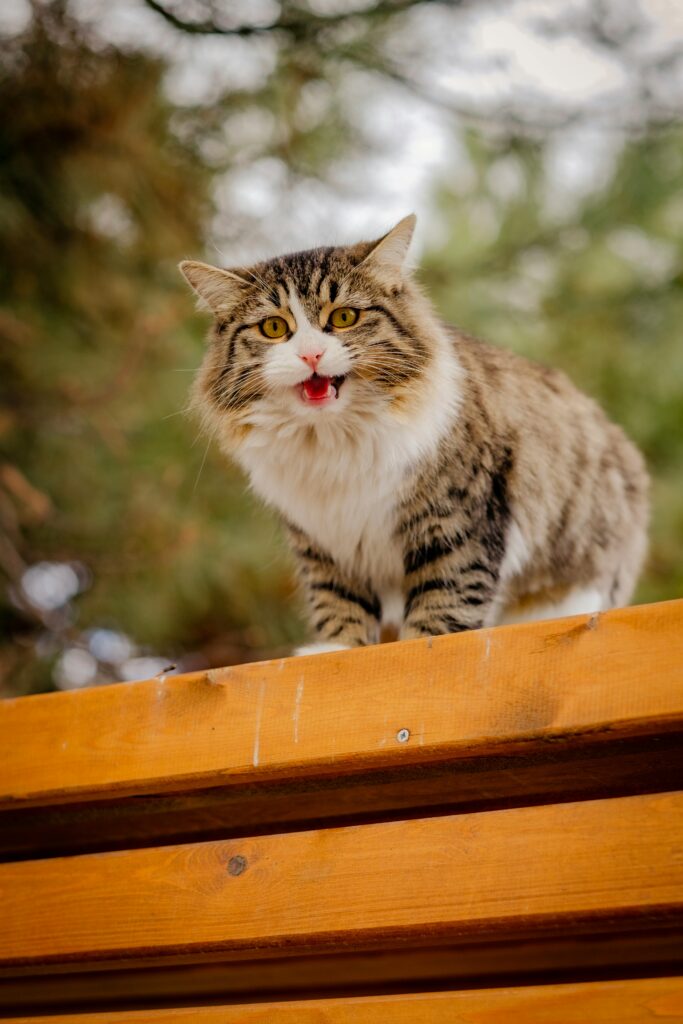
Bathroom and Laundry Room Safety
The bathroom and laundry room can pose unique risks to your pets, so it’s important to take specific precautions in these areas. Start by storing cleaning products securely in cabinets or high shelves to prevent your pets from accessing them. Many household cleaning products contain chemicals that can be toxic to animals, so it’s crucial to keep them out of reach.
Keep toilet lids closed when not in use to prevent your pets from drinking or falling into the toilet bowl. Some cleaning agents and toilet bowl additives can be harmful if ingested. Consider using a toilet lock to keep the lid securely closed, especially if you have curious or mischievous pets.
If you have a washing machine or dryer, make sure they are securely closed or have childproof locks. Cats, in particular, may be attracted to warm and cozy laundry inside these appliances and decide to crawl inside. Always double-check before starting a load to ensure your pet hasn’t snuck in.
Store towels and other laundry supplies properly to prevent your pets from chewing on them or potentially ingesting them. Keep them in closed cabinets or drawers to minimize the risk. Be cautious of dangling cords from blinds or window coverings in your bathroom or laundry room, as they can be tempting for pets to play with.
To further ensure the safety of your pets, it’s important to keep bathroom doors closed whenever possible. This will prevent pets from entering and potentially getting into substances or items that could be harmful to them.
Kitchen Safety Measures
The kitchen is often a hub of activity in the home, and it’s important to take specific measures to pet-proof this area. Start by storing food securely to prevent your pets from accessing it. Keep pantry doors closed, store dry food in sealed containers, and avoid leaving food unattended on countertops or tables. Make sure to communicate with family members to avoid accidentally leaving food within your pet’s reach.
Garbage bins can be a tempting target for pets, so it’s crucial to keep them tightly closed. Invest in garbage bins with secure lids that are difficult for pets to open. Alternatively, you can use specialized pet-proof trash containers that are designed to keep your curious companions out.
Dishwashing detergents and other cleaning products used in the kitchen can be harmful to pets if ingested. Keep these products out of your pet’s reach by storing them in cabinets or on high shelves. Make sure bottles or containers are securely closed to prevent accidental spills or leaking.
Kitchen appliances can pose various risks to pets, so it’s important to secure them properly. Ensure that stovetop knobs are turned off and cannot be accidentally turned on by your pets. Keep appliances like blenders, toaster ovens, and microwaves unplugged when not in use to prevent any accidental injuries.
It’s essential to prevent your pets from accessing hot surfaces in the kitchen, such as stovetops and ovens. Use stove knob covers or protective barriers to prevent your pets from accidentally turning on the burners. Be cautious when cooking and make sure to keep your pets at a safe distance to avoid any potential accidents or injuries.
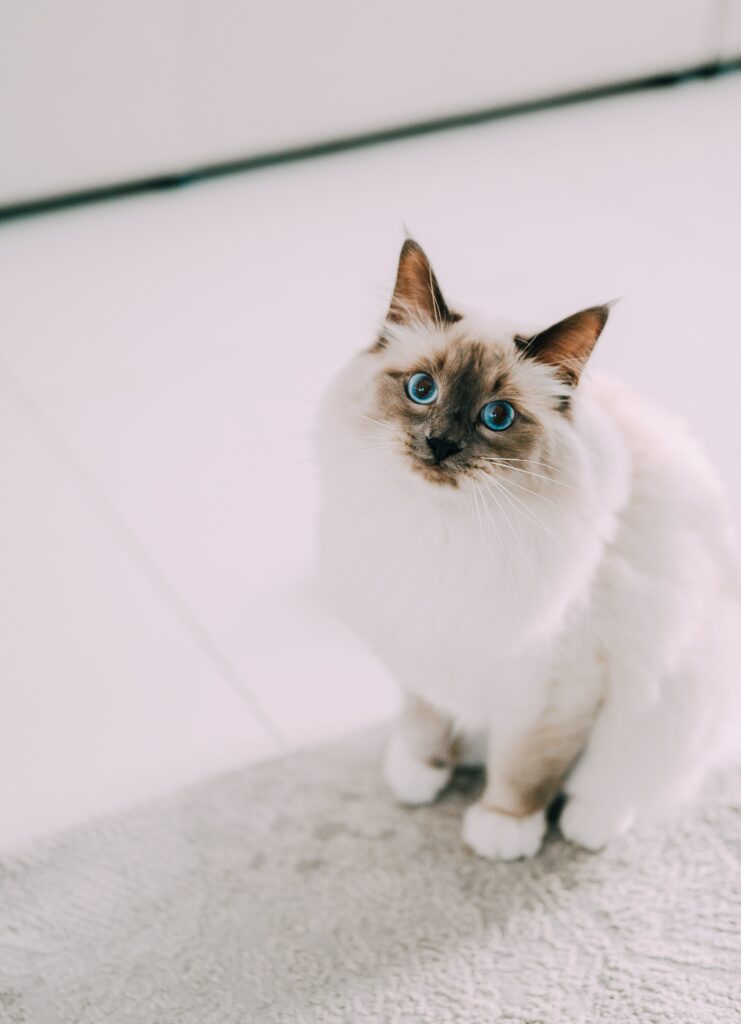
Ensuring Outdoor Safety
If you have an outdoor area, it’s important to take precautions to ensure your pets’ safety when they are outside. Start by building or repairing fences to create a secure boundary and prevent your pets from wandering off. Ensure the fence is in good condition, without any holes or gaps where your pets could escape.
Check your yard for any potentially poisonous plants. Many common plants and flowers, such as lilies, azaleas, and daffodils, can be toxic to pets if ingested. Remove these plants from your yard or place barriers around them to prevent your pets from accessing them.
Take measures to secure gates and entrances to your property to prevent accidental escapes. Make sure gates are properly closed and latched, and consider using locks or padlocks to provide additional security. Regularly inspect the gates and fences to ensure they are in good working condition.
Remove any potential escape routes from your yard to prevent your pets from running away. This could include fixing broken or loose boards in fences, securing gaps under gates or fences, or blocking off areas where your pets may be able to squeeze through.
Provide shade and water sources in your outdoor space to ensure your pets stay comfortable and hydrated. Set up a shaded area with umbrellas or create a sheltered space where your pets can seek shade during hot weather. Additionally, make sure there are accessible water bowls or water sources available for your pets to drink from while they are outdoors.
Managing Pet Behavior
In addition to physical safety measures, it’s important to manage your pet’s behavior to help prevent accidents or injuries. Training your pets to follow household rules is essential for their safety and your peace of mind. Teach them basic commands, such as sit, stay, and come, to ensure they respond to your cues and stay out of potential danger.
Providing mental and physical stimulation for your pets can help prevent boredom and destructive behavior. Engage them in interactive play sessions, provide puzzle toys, or even consider enrolling them in obedience classes or other training activities. This will not only keep them entertained but also redirect their energy towards positive outlets.
Redirecting destructive behavior is crucial to protect both your belongings and your pets. If you notice your pet engaging in unwanted behavior, such as chewing furniture or scratching walls, provide them with appropriate alternatives. For example, offer them chew toys or scratching posts as an alternative to your furniture or walls.
Use positive reinforcement to reward good behavior and discourage unwanted behavior. Praise and reward your pets when they exhibit desirable behavior, such as using their designated scratching post or going to their designated bathroom area. This positive reinforcement will help reinforce these behaviors and reduce the likelihood of destructive or undesirable actions.
Addressing separation anxiety is important to prevent your pets from engaging in destructive behavior when you’re not at home. Separation anxiety can cause pets to chew on furniture, bark excessively, or engage in other destructive behaviors. Consult with a veterinarian or animal behaviorist for guidance and strategies to help manage your pet’s separation anxiety.
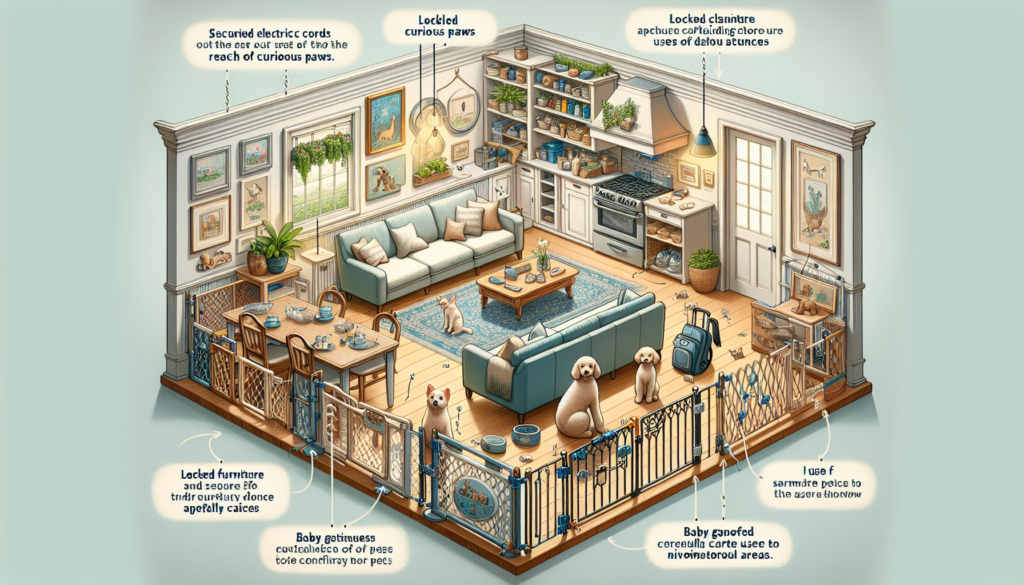
Preventing Accidental Injuries
Accidental injuries can happen at any time, so it’s important to take preventative measures to keep your pets safe. Keep doors and windows securely closed to prevent your pets from escaping or getting injured outdoors. Install window screens or window guards to prevent pets from falling out of open windows, especially in higher floors or apartments.
If you live in a high-rise building, it’s crucial to secure balconies and high-rise windows to prevent falls. Install protective barriers or netting around balconies or windows to keep your pets safe. Make sure the barriers are tall enough and have narrow gaps to prevent your pet from squeezing through.
As mentioned earlier, it’s important to keep toilet lids closed to prevent your pets from drinking or falling into the toilet bowl. Some cleaning agents or toilet bowl additives can be harmful if ingested, so keeping toilet lids closed is an important safety measure.
Avoid leaving harmful objects unattended, especially when it comes to cleaning supplies, sharp objects, or small choking hazards. Pets have a tendency to explore and chew on objects around the house, so it’s important to keep potentially dangerous items out of their reach and to safely store them when not in use.
Supervise interactions between pets and other pets or children. Even well-behaved pets can have occasional moments of unpredictability, so it’s important to monitor their interactions to prevent any potential conflicts or injuries. This is especially important when introducing a new pet to your household or when young children are present.
Regular Cleaning and Maintenance
Keeping your home clean and well-maintained is an important aspect of pet-proofing. Regularly clean and disinfect pet supplies and toys to prevent the spread of bacteria or parasites. Wash food and water bowls, pet toys, and bedding regularly to maintain a clean and hygienic environment for your pets.
Vacuum and mop floors frequently to remove pet hair, dirt, and dander. This not only helps to keep your home clean but also reduces the risk of allergies or respiratory issues for both you and your pets. Use a vacuum cleaner with a pet-specific attachment or a vacuum specifically designed to pick up pet hair for optimal results.
Maintaining a clean litter box is important for both your pet’s health and overall hygiene. Scoop the litter box daily and completely change the litter as needed. Regularly washing the litter box with a mild, unscented soap will help eliminate any odors and keep your pet’s bathroom area clean and inviting.
Wash pet bedding, blankets, and other fabric items regularly to remove dirt, hair, and odors. Follow the care instructions on the labels to ensure proper cleaning. Consider using pet-friendly laundry detergents that are hypoallergenic and free of any harsh chemicals that could irritate your pet’s sensitive skin.
Remove pet hair from furniture regularly to prevent it from accumulating and becoming a nuisance. Use lint rollers or specialized pet hair removal tools to easily and effectively remove pet hair from upholstery, pillows, and blankets. This will help keep your furniture clean and free from allergens.
By following these comprehensive tips for pet-proofing your home, you can create a safe and secure environment for your furry friends. Remember, every pet is unique, so it’s important to assess your own living space and take additional measures tailored to your pet’s specific needs. Happy pet-proofing!
